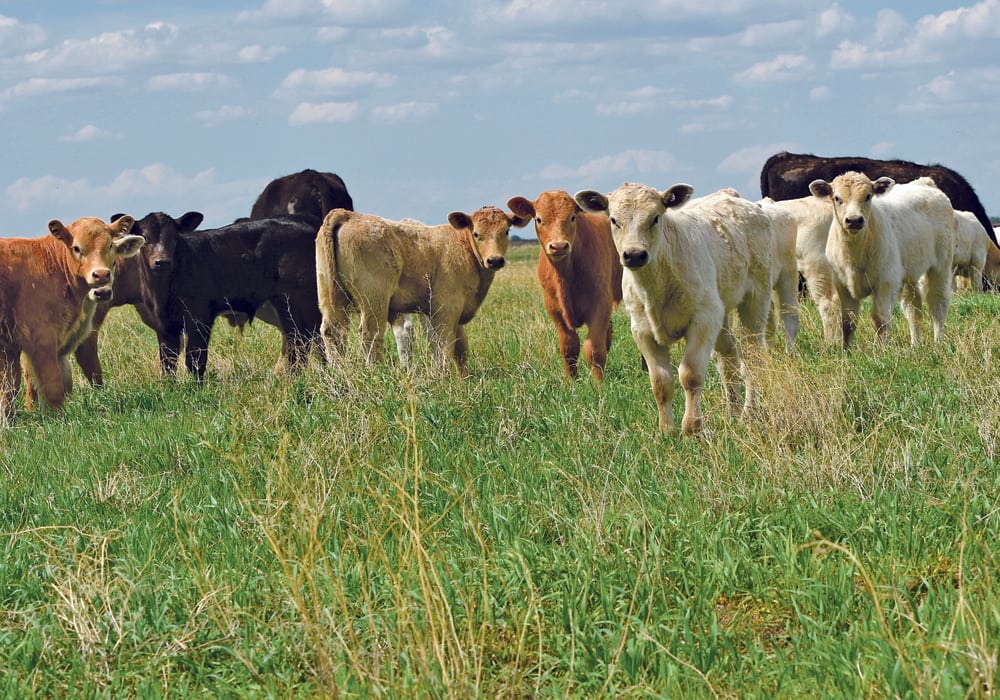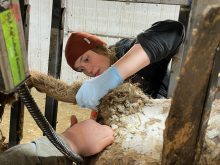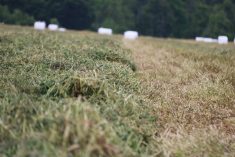Producers with overwintered crops from last year should be mindful of risks when using it this spring or fall for feed.
Concerns include lower protein and energy contents, and lower digestibility for livestock. In fact, digestibility could be as much as 10 percent lower and protein content could be three percent lower, said Barry Yaremcio, a beef and forage specialist with Alberta Agriculture.
“The quality is not great,” he said, adding that overwintered forages lack vitamins.
“They’re going to have to really pay attention to vitamin supplementation if using two-year old feed, straw and silage.”
Read Also

Feds propose overhaul of chronic wasting disease control program
Chronic Wasting disease control program getting updated by Canadian Food Inspection Agency with feedback encouraged from producers.
The long winter this year nearly emptied or fully depleted feedstocks for producers, forcing many to put cattle on pasture sooner than recommended.
Yaremcio said people in that situation should evaluate their inventories and feed the lower quality stuff first and save the better feed for after calving.
“If you don’t, your cost of supplementation goes through the roof,” he said.
Producers also shouldn’t cut corners, he added, even if they’re short on cash due to higher calf death rates this year.
He said decisions they make this year will affect animal productivity for the next two years.
“It may look like saving $50 or $60 per cow by not feeding this or that, but if you have a 10 percent reduction in conception rates, it’s definitely costing a lot more than that $50 to $60 per cow,” he said.
Producers with overwintered feedstocks must evaluate the nutritional content, especially for animals that are lactating or in late pregnancy.
Such animals need 25 to 30 percent more nutrients than animals in early or mid-pregnancy.
For sheep, overwintered crops aren’t recommended because they need very high quality forages in late pregnancy and after lambing.
It’s also recommended that producers test any overwintered crops for mycotoxins, which stem from moulds and fungi, like fusarium.
Concentration of mycotoxins in the spring will likely be the same as they were last year, and it should be tested when crops are getting screened for nutritional content.
Pigs are extremely sensitive to mycotoxins, and they will refuse feed if levels of vomitoxin reach one part per billion. As well, overwintered spring-threshed grains could contain waterfowl manure, so it should not be used as feed for chickens or turkeys.
Cattle and sheep can experience acidosis and bloat when fed mature greenfeed because they prefer to eat more grain content instead of the straw.
Saskatchewan and Alberta agriculture don’t recommend making silage from overwintered crops because the end product will likely be poor and not worth the effort.
Producers who bale overwintered crops this fall should make sure the bales are dry to retain quality. Moulds can develop in greenfeed bales that have high moisture, and they should be rolled out so livestock can sort through it and avoid contaminated material.
As well, producers should keep their own health in mind when using overwintered crops.
Swaths could contain mice feces or urine, which would put farmers at risk of hantavirus, a rare but deadly condition. They could also face other respiratory issues when moulds, dusts and spores are released.
Contact jeremy.simes@producer.com
















